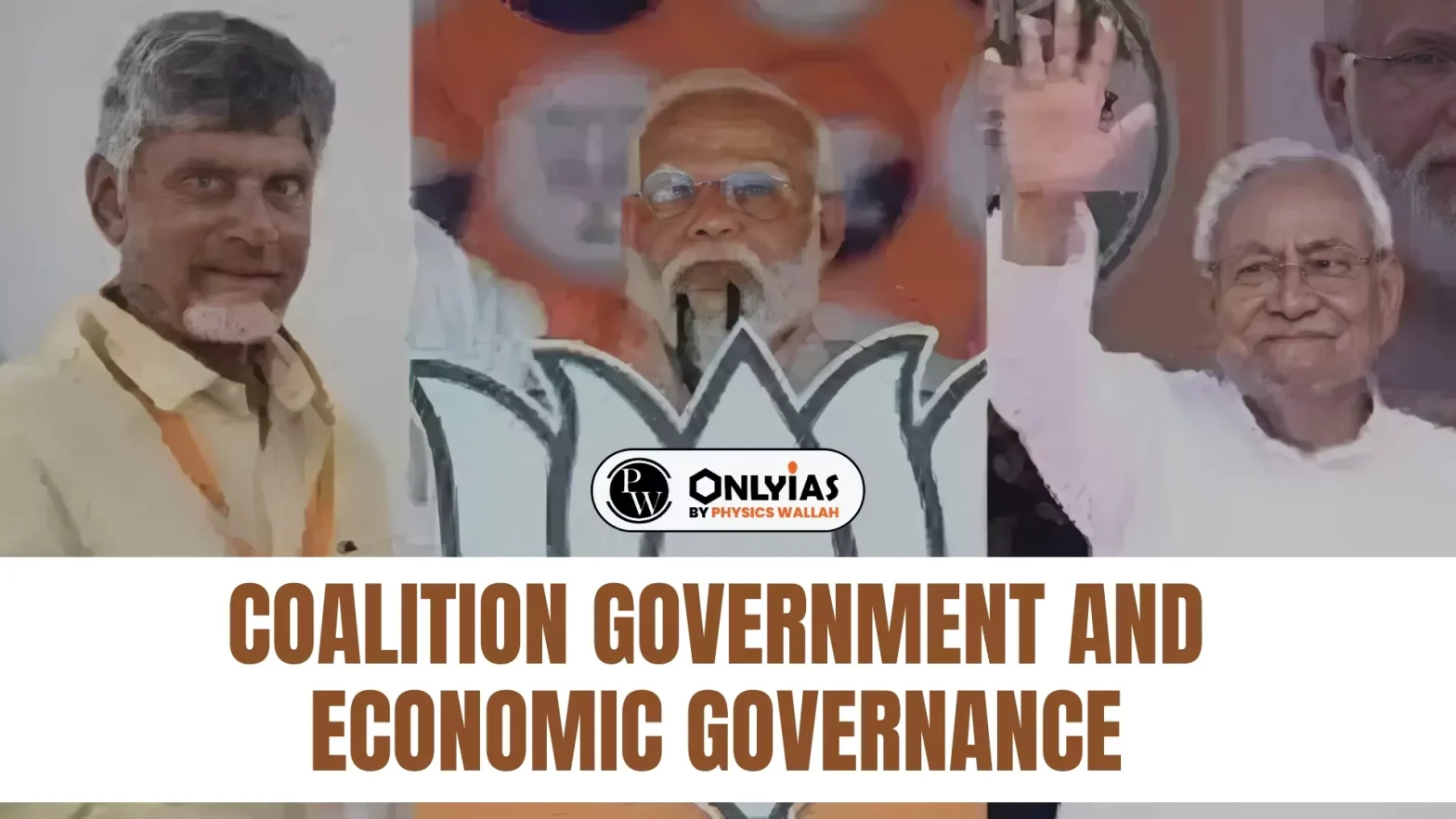Recently, the National Democratic Alliance (NDA) has returned to power for a historic third straight term at the Centre, but the Bharatiya Janata Party (BJP) itself has fallen short of the majority mark of 272, which implies there will be a coalition government.
- By looking back at India’s economic history since 1991, it becomes clear that coalition governments have undertaken some of the boldest and most visionary reforms that laid the foundation for India’s resurgence.
Coalition Government
- Refers: A coalition government is one in which multiple political parties come together and often reduce the dominance of the party that has won the highest number of seats.
- Coalition governments are formed as seldom does a political party win the necessary number of seats to form the government on its own.
- First in India: In India, the first coalition government to complete its full-term was the Atal Bihari Vajpayee-led National Democratic Alliance from 1999 to 2004.
- Implications: While some say that coalition governments generate more inclusive policies, others believe that coalitions impose constraints on policy making.
- In the words of Montek Singh Ahluwalia (former Deputy Chairman of the erstwhile Planning Commission), a coalition government is a strong consensus for weak reforms.
|
Enroll now for UPSC Online Course
Notable Reforms brought by the Previous Coalition Governments
- Under the P V Narasimha Rao-led Government: It discarded centralized planning and opened the Indian economy to global completion by removing the license-permit raj. The country also became a member of the World Trade Organisation.
- Since 1991, when India was forced to open up its economy and give up on the planned economy model, all governments were coalitions of the sort where even the lead party was quite far from the majority mark.
- Under the short-lived Deve Gowda Government: It came out with what is still referred to as the “dream budget”. It placed faith in the Indian taxpayers and cut tax rates — both personal income tax, corporate taxes, and customs duties.
- Under the Atal Bihari Vajpayee-led Government: It framed the Fiscal Responsibility & Budget Management (FRBM) law for fiscal rectitude, and limited the government’s ability to borrow within prudential limits.
- It further advanced the push towards disinvestment of loss-making Public Sector Undertakings (PSUs).
- It focused on boosting rural infrastructure and connectivity through the PM Gram Sadak Yojana.
- It also brought in the Information Technology Act, in 2000, that laid the foundation for the bustling e-commerce giant that India is today.
- Under the Manmohan Singh-led Government: It brought in several reforms under the rights-based approach — far more robust than the personal guarantees of an individual leader.
-
- The Right to Information Act, which boosted transparency in India’s democracy.
- The Right to Food, which ensured that no Indian should go hungry.
- It brought in the Mahatma Gandhi National Rural Employment Guarantee Act (MG-NREGA), which provided minimum employment to the rural poor.
- It also deregulated fuel prices before it left office and started work on direct benefit transfers as well as Aadhaar and GST.
The Statistics
- The average growth rate for the 10-year period for the BJP-led majority government was 6%, including the 5.8% contraction the economy witnessed in FY21 amid Covid-related disruptions.
- The BJP-led government achieved an average 7.4% annual growth in its first term between 2014 and 2019 – the fastest since 1989, when the coalition era started – growth rates under coalitions.
- The Congress-led United Progressive Alliance (UPA) government that preceded the BJP government in 2014 secured 6.7% growth in its five years, and 6.9% in the previous five years of its first term.
- The compound annual growth rate (CAGR) during the 10-year rule of the UPA at 6.8% was the fastest in India’s history.
- Growth averaged 5.6% between 1991, when the Congress led by PV Narasimha Rao formed a minority coalition with Janata Dal, and 1999 when Atal Bihari Vajpayee-led NDA returned to power for its full five-year term.
- Concern that is Faced by Coalition Government:
- Such coalitions have faltered on inflation.
- Inflation for industrial workers was 5.4% during the last decade, when the BJP had an absolute majority, but was 10.3% for UPA’s second stint and 6% in the first one.
- While it was low for Vajpayee’s years between 1999 and 2004, industrial worker inflation was 9.6% between 1991 and 1999.
Check Out UPSC NCERT Textbooks From PW Store
![]() 5 Jun 2024
5 Jun 2024

